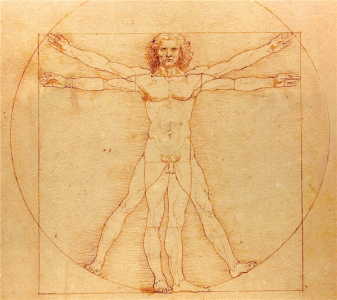
The term Fibonacci has certainly come to the ears of numerous investors and traders. The golden ratio and the classical Fibonacci retracements available in many chart programs are often associated with it. But what is this mathematical discovery all about? Can it really be used in everyday trading or even profitably? The following series on Fibonacci is dedicated to these and other questions on the subject. Look forward to an exciting voyage of discovery through the field of Fibonacci relations and their numerous applications.
Spirals
The term Fibonacci has certainly come to the ears of numerous investors and traders. The golden ratio and the classical Fibonacci retracements available in many chart programs are often associated with it. But what is this mathematical discovery all about? Can it really be used in everyday trading or even profitably? The following series on Fibonacci is dedicated to these and other questions on the subject. Look forward to an exciting voyage of discovery through the field of Fibonacci relations and their numerous applications.
History
How it all began: In his famous book "Liper Abacci" (Book of Calculations), published in 1202, the mathematician Leonardo Fibonacci da Pisa (~1180 to ~1240) documented a mathematical achievement that was unparalleled.
On his numerous trade trips to Algeria, Egypt, Syria, Greece, Sicily and Provence, the Pisaer became acquainted with all the mathematical methods known at the time. As a result, he succeeded in replacing the Latin number system that had been customary until then with the decimal system we were familiar with. This new number system is also known as the Hindu-Arab number system. Since it replaced the Latin number system common before, in particular by the introduction of zero, it revolutionized the calculation approaches valid up to then. The previously used Latin number system had a huge disadvantage: it only allowed calculations that had to be carried out with the help of a calculating board. In this context, it is hardly surprising that this revolutionary mathematical discovery by Leonardo Fibonacci da Pisa had a major influence on further scientific development, for example in mathematics, accounting and various related number sciences such as technology, physics and astronomy.
Who was Leonardo Fibonacci da Pisa?
Without digressing too far into the world of history, the look at the personality of Leonardo Fibonacci da Pisa is worth a short detour. For decades he devoted himself primarily to the study of mathematics and geometry. Most of his approaches were based on the assumption that natural cycles develop in constant ratios. These more or less everywhere occurring relations become representable by the sequences of numbers developed by Leonardo himself and, as we will learn later, especially by their specific relational values and are found as recurring patterns everywhere in the micro- and macrocosm of our world. The following paragraph provides an insight into the diversity of these patterns.
Broker WH SelfInvest receives another outstanding rating from the German consumer institute.

- Order execution: 5 out of 5 stars. Score: "extremely good".
- Trading platform: 5 out of 5 stars. Score: "extremely good".
- Mobile platforms: 5 out of 5 stars. Score: "extremely good".
- Service quality: 5 out of 5 stars. Score: "extremely good".
- Order possibilities: 5 out of 5 stars. Score: "extremely good".
Test WH SelfInvest: free demo trading account.
Fibonacci - more than a building block in the world
The Fibonacci numbers and ratios can be found from the great to the small. Therefore it is not surprising that Fibonacci can be found as a generic term in almost all areas of the world: starting with the cosmic nebulae, the galaxies and their spiral structure (picture 1), up to the blueprint of the bees. But to list a few more everyday examples, now turn your gaze from art and architecture to music. Then let him wander from astronomy into certain areas of physics and nature to finally discover the relationship of Fibonacci or the Golden Section in humans. The relationship of the golden section proves to be the decisive basis of all these examples. The golden ratio refers to a certain ratio of two numbers - which usually indicate the length of distances - which is often understood as the ideal proportion and the epitome of aesthetics and harmony. But it is precisely the mathematical properties that distinguish this phenomenon.

To picture 1: Even far away from our earthly world the forms called "Golden Spirals" can be found again. The Nautilus bowl, known in many places, serves as an earthly counterpart.
To the Golden Section
This is related to the Fibonacci sequence and can be derived from the following formula (Binet formula):

The quotients of two Fibonacci numbers approach the Golden Ratio, also known as Phi.

Or quite practically and simply expressed: b behaves to a like a to the total length of a+b.
a / b = ( a + b ) / a respectively a / b = φ = 1,618...

In the following we would like to show you some examples of the enormous importance of the Golden Section in various areas:
- In art and architecture: Especially during the Renaissance, the Golden Section was intensively used in the visual arts. The two best known examples can be found in Leonardo da Vinci's paintings "The Proportions of Man" (picture 2) and the Mona Lisa. The Golden Section was already used in ancient times for sculptures and the construction of temples - the most famous example of this is the Parthenon Temple in Athens. Whether intention or coincidence - fact is the undeniable existence of this relationship.
- In music: whether in violin making, especially in the resonating body, or in the piano keys, which form an octave: Even in music there are two ways in which the golden ratio can occur. On the one hand, the frequencies of two notes together can be in the golden ratio. On the other hand, a piece can consist of several parts whose lengths also comply with the conditions of the Golden Section.
Picture 2 Leonardo da Vinci - Human Proportions

Picture 2: This picture shows how the human body fits into a square or a cube. The square and the circle meet at the feet, where the distance from the navel to the coccyx is exactly half the distance between the highest point of the head and the outer edge of the circle. If you move the center of the circle from the navel to the coccyx, you get the picture of the Phi ratio again.
- In astronomy: The spiral shape of our Milky Way and other galaxies has already been mentioned. But in 1964 something even more amazing was proven: The ratios of the planetary orbits, which can be described by rational numbers, have a long-term stabilizing effect against small disturbances and are divided into the golden ratio (1/1,168). Such orbits are called KAM orbits after the discoverers Andrei Kolmogorow, V.I. Arnold and J. Moser.
- In solid-state physics: It is known that some crystals do not have a periodic lattice structure, but are arranged internally in the ratio of the Golden Section to fill space.
- In nature, the arrangement of leaves or seeds of some flowers and other plants is identical to the Golden Angle. The best known example is certainly the sunflower, which has spirals in the blueprint of its inflorescence, the number of which is marked by the Fibonacci number sequence. Thanks to this arrangement, many seeds and leaves can be accommodated in a relatively small space. The light entering from above can be used optimally. This arrangement is very common in nature, for example in pineapples or fir cones.
- In humans: The belly button of a human divides it in the relation of the golden section (height / length - here from the feet to the belly button). It is the same with the stretches "elbow to wrist" and "fingertip to wrist", to name only a few variations.
- Human behaviour plays a special role in this - and here the circle closes for application in the financial markets. Investor behaviour in particular is probably the only constant in the cosmos of dynamic numbers in view of the ever faster and more volatile markets. Nature, or rather the laws of nature, therefore also hold a place in the matter of stock markets and capital.
Conclusion
In the first part of our series we looked at the basics for Fibonacci. Assuming that the origin of every market movement can be traced back to a scientific basis, this technique can be used to develop an understanding of markets and investor behavior - both of which have always been influenced by human feelings such as fear and greed. But how can this insight be applied in practice? This is what we will talk about in the next articles of our series, in which we go deeper into the world of Fibonacci.


